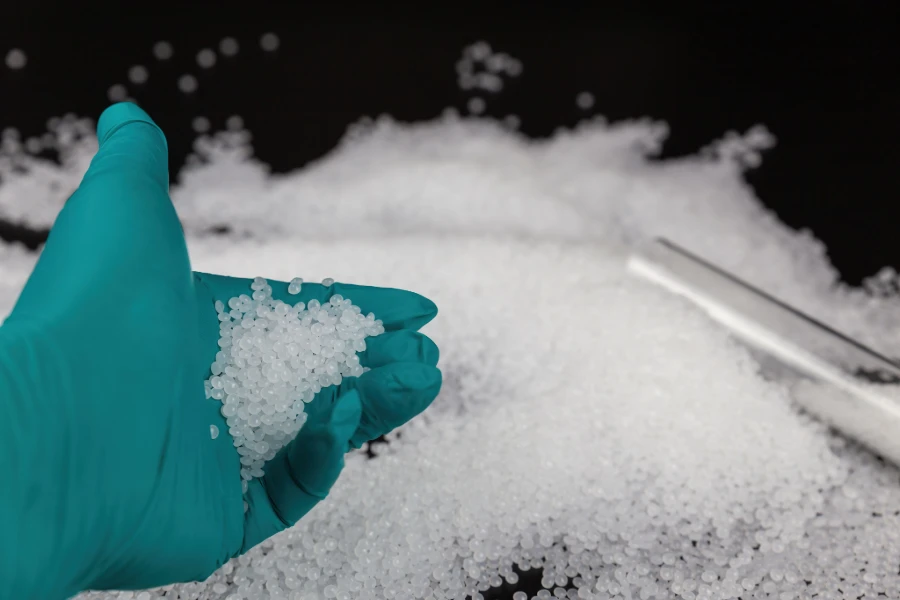Glove products
How to Select Nitrile Chemical Resistant Gloves for Industry?
In any industrial setting where chemicals are present, the first line of defence for worker safety is often a pair of gloves. However, the stakes are far too high for just any glove. The complex nature of chemical interactions requires a sophisticated and reliable barrier, making the selection of the right nitrile chemical-resistant gloves one of the most critical decisions a safety manager can make. This choice not only prevents immediate injuries like burns and irritation but also protects against the long-term, insidious health effects of chemical absorption through the skin. With a growing emphasis on workplace safety and stringent regulations, understanding the nuances of hand protection is more important than ever.
Understanding the Landscape of Chemical Hand Protection
The modern industrial environment is rife with potential hazards. From aggressive solvents and corrosive acids to oils and cleaning agents, the risks are diverse. This has fueled the growth of the chemical protective gloves market, with manufacturers continually innovating to meet the demand for safer, more effective solutions. The primary goal of any pair of chemical safety gloves is to prevent harmful substances from contacting the skin. This is achieved by creating a durable, impermeable barrier. The effectiveness of this barrier is determined by several factors, including the glove’s material, thickness, and manufacturing quality. Selecting the wrong glove can create a false sense of security, potentially leading to dangerous exposure. Therefore, a thorough understanding of the specific chemicals being handled and the tasks being performed is the foundational step in mitigating risk and fostering a culture of safety.
Do Nitrile Gloves Protect Against Chemicals? A Detailed Examination
A common and critical question in industrial safety is, “Do nitrile gloves protect against chemicals?” The answer is a resounding yes, but with an important qualification: the right nitrile glove, engineered for the specific chemical, is essential. Nitrile, a synthetic rubber compound (nitrile butadiene rubber), has gained widespread popularity for its excellent balance of chemical resistance, durability, and comfort, especially as a latex-free alternative. Unlike materials like latex or vinyl, which may degrade quickly upon contact with certain chemicals, nitrile offers robust protection against a wide array of substances, including many oils, greases, solvents, and caustics.
The true measure of a glove’s protective capability lies in concepts like permeation and breakthrough time. Permeation is the process by which a chemical passes through a glove’s material on a molecular level, even without visible holes or tears. The time it takes for a chemical to be detected on the inside of the glove is known as the breakthrough time. A high-quality nitrile glove is formulated to maximise this breakthrough time for specific hazardous chemicals. This is why a one-size-fits-all approach is inadequate. A standard examination glove may offer some protection against mild cleaning agents, but it will be wholly insufficient for handling potent industrial solvents. The key is to select gloves that have been specifically tested and certified for the chemicals present in your workplace.
Is Nitrile Chemical-Resistant? The Science Behind the Strength
Building on the previous point, we can confidently answer the question, “Is nitrile chemical-resistant?” Yes, its molecular structure inherently provides superior resistance compared to many other disposable glove materials. The properties of nitrile make it an ideal choice for acid-resistant nitrile applications and for handling various petroleum-based products that can quickly compromise other glove types. Its durability also translates to a high level of puncture and abrasion resistance, a critical feature in environments where hands are performing rigorous mechanical tasks.
According to the Occupational Safety and Health Administration (OSHA), employers are required to select PPE, including gloves, that is appropriate for the specific hazards identified in the workplace. This underscores the necessity of moving beyond the general material and looking at performance data. Advanced formulations of nitrile are engineered to enhance its natural properties, providing a stronger, more resilient barrier against an even broader spectrum of chemicals. This scientific innovation is what separates general-purpose gloves from specialised chemical resistance gloves designed for high-risk industrial applications.
Deciphering Safety Standards for Hand Protection
To standardise glove performance and aid in selection, several international certifications are used. Among the most important is the EN ISO 374 standard, which specifies the capability of gloves to protect the user against chemicals and micro-organisms. Under this standard, gloves are rated as Type A, B, or C based on their permeation resistance to a list of 18 standard test chemicals. Type A gloves have a breakthrough time of over 30 minutes for at least six of these chemicals. Type B gloves have a breakthrough time of over 30 minutes for at least three of these chemicals. Type C gloves have a breakthrough time of over 10 minutes for at least one of these chemicals.
Another key standard is the American National Standards Institute’s ANSI/ISEA 105, which provides criteria for various performance metrics, including cut resistance, puncture resistance, and abrasion resistance. A glove’s EN 388 certification, for example, indicates its performance against mechanical risks. Understanding these ratings allows you to make an informed, data-driven decision rather than relying on assumptions about a glove’s capabilities.
Key Factors for Selecting the Right Glove
Choosing the optimal nitrile chemical-resistant gloves requires a multi-faceted approach. Beyond just the material, several practical factors must be considered to ensure both safety and productivity.
First and foremost is chemical specificity. Always consult the manufacturer’s chemical resistance chart and compare it against the Safety Data Sheets (SDS) for the chemicals used in your facility. The NIOSH Pocket Guide to Chemical Hazards is another excellent resource for understanding chemical properties. Second is durability and thickness. A thicker glove (measured in mils) generally offers greater protection and resistance to tearing during heavy-duty operations. However, this must be balanced with the need for dexterity. High-quality disposable chemical-resistant gloves can offer impressive strength without excessive bulk.
Comfort and fit are also crucial for user compliance. A poorly fitting, uncomfortable glove can cause hand fatigue and may even be removed by workers for tasks requiring fine motor skills, completely negating its protective value. Look for gloves with features like finger texturing for enhanced grip and flexible formulations that feel like a second skin. Finally, consider specific application requirements. In industries like electronics manufacturing or automotive painting, a silicone-free formulation is essential to prevent contamination and ensure a flawless product finish. As advised by university EHS departments like Princeton’s, a comprehensive assessment is key.
INTCO Medical: Engineering the Future of Hand Safety
In a field where protection is paramount, the manufacturer behind the product is as important as the product itself. For decades, INTCO Medical has been at the forefront of personal protective equipment innovation. As a globally recognised leader and the world’s largest latex-free disposable gloves manufacturer, our commitment to safety, quality, and research is unmatched. We understand that true safety goes beyond simple compliance; it’s about creating products that workers can trust implicitly, day in and day out. Our extensive expertise in material science and manufacturing excellence allows us to develop solutions that address the most demanding industrial challenges.
This dedication to superior protection is embodied in our latest innovation: ChemTuff™ Disposable Nitrile Gloves. At INTCO Medical, we believe we are the best nitrile gloves manufacturer, and ChemTuff™ is a testament to that belief. It is more than just a glove; it is a meticulously engineered safety tool designed for high-risk chemical environments. ChemTuff™ gloves are engineered with advanced chemical splash resistance technology, passing key tests for 5 major chemical reagents to offer protection far superior to standard Type B gloves. They are exceptionally durable, with 45% higher strength and EN 388 Level 2 abrasion resistance, ensuring they hold up during rigorous operations. The silicone-free formula prevents contamination in sensitive tasks, while the ultra-soft, smooth formulation offers a flexible, second-skin fit that reduces hand fatigue and makes donning 50% faster. If you want to learn more about our company or explore how ChemTuff™ can elevate your safety standards, please contact us today. Trust INTCO Medical to provide the gold standard in hand protection.


























